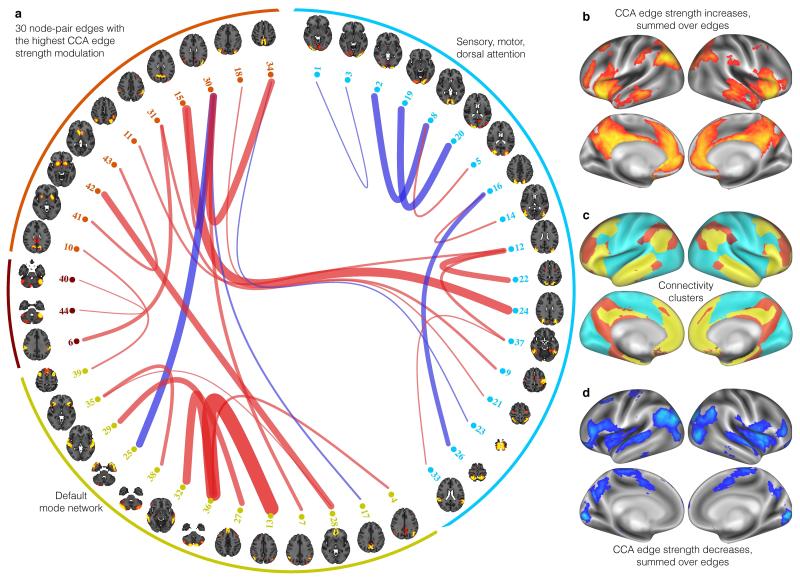Figure 2.
(a) The 30 brain connections most strongly associated with the CCA mode of population variability. To aid interpretation, the CCA edge modulation weights are multiplied by the sign of the population mean correlation; hence red indicates stronger connections and blue weaker, for high-scoring subjects (and vice versa for low-scoring subjects). (b) Map of CCA connection strength increases (each node’s parcel map is weighted by CCA edge-strength increases, summed across edges involving the node). (c) Group-mean functional clustering: 4 clusters from a hierarchical analysis of all 200 nodes’ population-average full correlation (Supplementary Fig. 3). These fall into two groups: one cluster (blue) contains sensory, motor, insula and dorsal attention regions, and a group of 3 correlated clusters (brown, red, yellow) primarily covering the default mode network and subcortical/cerebellar areas. (d) As b, but showing CCA connection strength decreases. Maps d and b are largely non-overlapping except in insula. b has spatial correlation of +0.40 with the default-mode areas in c (i.e., high overlap), while d shows negative correlation (−0.12). The average connectivity strength increase is approximately double that of the average decrease (as reflected in the predominance of red edges in a; also, a single map averaging across all 200 edges for each node shows a pattern of overall increase highly similar to b; finally, both b and d are thresholded at the 80th percentile of their respective distributions, and if the threshold applied to b were applied to d, none of the strength reductions shown would survive).

